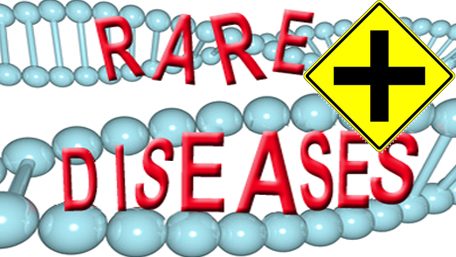Search Results
10 results for population screening
Rare Diseases, Genomics and Public Health: An Expanding Intersection

Rare Disease Day is celebrated on the last day of February each year. On that day, millions of patients and their families around the world share their stories in order to raise awareness about rare diseases and their impact. There are thousands of diseases that are individually rare but collectively common. In the United States,
Posted on by 1 CommentPublic Health Genomics 2015: Looking Back, Looking Ahead

In 2015, the United States launched the precision medicine initiative that includes a cancer component and a national cohort research study of one million or more people. While much of this initiative will take years to develop outputs for use in health care, a public health perspective is crucial to ensure the initiative’s success in
Posted on byNational Family History Day 2015: Thinking globally and acting locally

Though you probably will not find greeting cards in stores celebrating this fact, Thanksgiving has been known as National Family History Day in the U.S. since 2004. The Office of the U.S. Surgeon General and many federal, state and private partners have marked each year with events and announcements promoting the collection and use of family
Posted on byPrecision Medicine vs. Public Health: a False Dichotomy?

The recent focus on precision medicine has attracted criticism from the public health community that firmly believes that health is determined by far more than health care, and that more sophisticated medical technologies may not adequately address important determinants of population health. There is no argument that a focus on the wider environmental, structural and
Posted on byPrecision Medicine, Implementation Science and Public Health: How Do We Scale Up From 1 Million to 300 Million?

Planning for the 2015 Presidential Precision Medicine Initiative is in full swing. After the initial announcement in January 2015, several workshops were held to help in design and execution of the longitudinal cohort study of 1 million persons. The workshops covered important topics including a Building a Precision Medicine Research Cohort, Scientific Opportunities, Digital Health Data,
Posted on by 1 CommentPrecision Medicine and Public Health: Improving Health Now While Generating New Knowledge for the Future

In a previous post, I commented on the importance of a public health perspective to ensure the success of the proposed precision medicine large national research cohort. Here I offer additional thoughts on the need to balance short term public health gains with long term knowledge generation from this effort.
Posted on byThe Ultimate Selfie

Now within reach, our personal genomic sequence offers an incredible reflection of who we are, and great promise to improve human health, but there are serious concerns about embracing it too quickly. Empowered Consumers in the Era of Me If social media is any indication, we, like Narcissus of ancient myth, are surely self-obsessed creatures.
Posted on by 3 CommentsPrecision Public Health and Precision Medicine: Two Peas in a Pod

The 2015 US Precision Medicine Initiative promises a new era of biomedical research and its application in health care. The initiative is enabled by rapid advances in biomedical sciences, including genomics and bioinformatics, as well as the progress in communication, information technologies and data science. Targeted cancer therapies are a near term goal for
Posted on byHuman Disease and Bad Luck: Acting on Genetic & Environmental Factors to Reduce Cancer Risk

In January 2015, a paper in Science created a “buzz” in the scientific community and the media. Based on statistical modelling, the authors suggested that “only a third of the variation in cancer risk among tissues is attributable to environmental factors or inherited predispositions. The majority is due to ‘bad luck,’ that is, random mutations
Posted on by 1 CommentThe Success of Precision Medicine Requires a Public Health Perspective

The announcement of a new major US Precision Medicine initiative comes more than a decade after the completion of the Human Genome Project, the ambitious project that culminated in sequencing all 3 billion base pairs of our genome. Continuous improvement in the quality of sequencing, dramatic reduction in price, and ongoing advances in multiple sectors
Posted on by 1 Comment